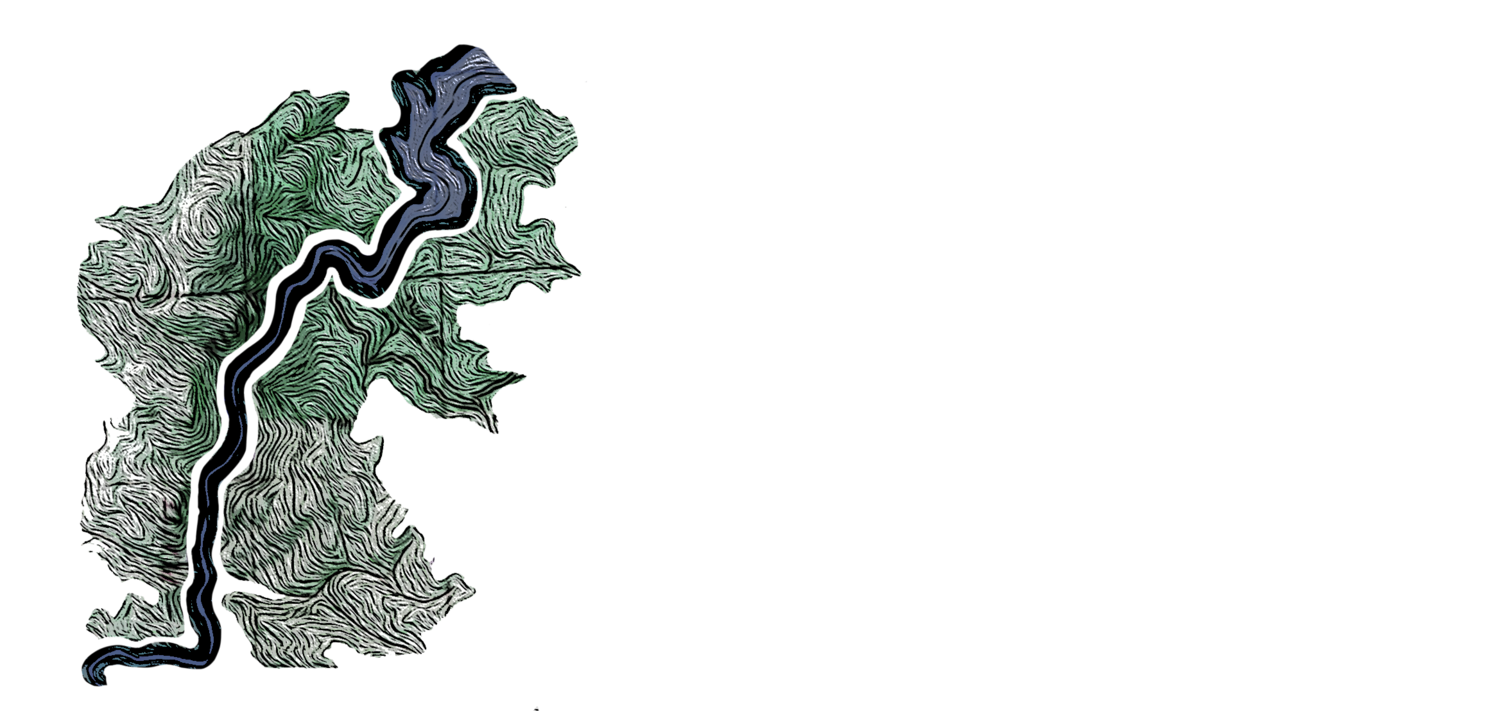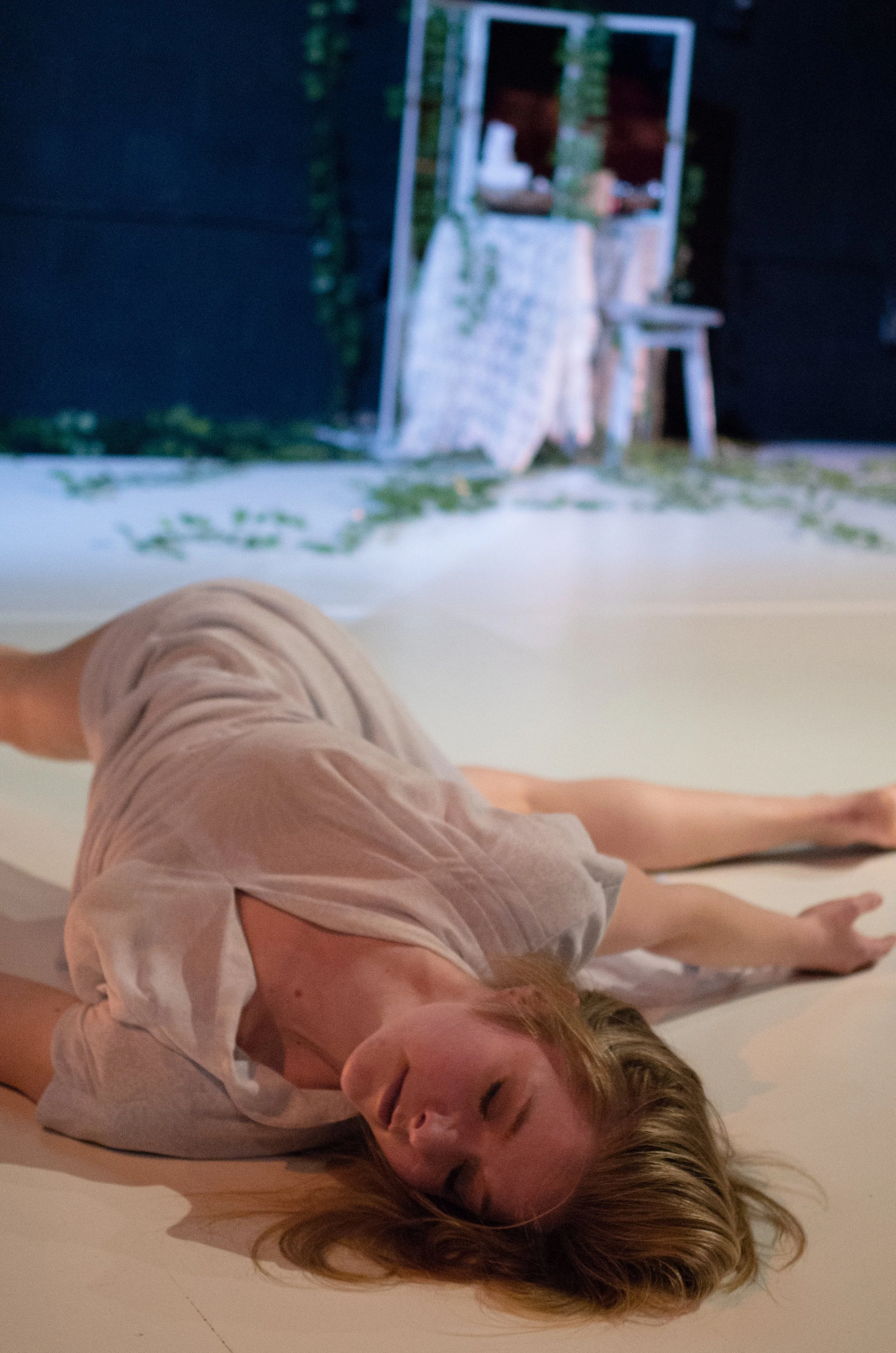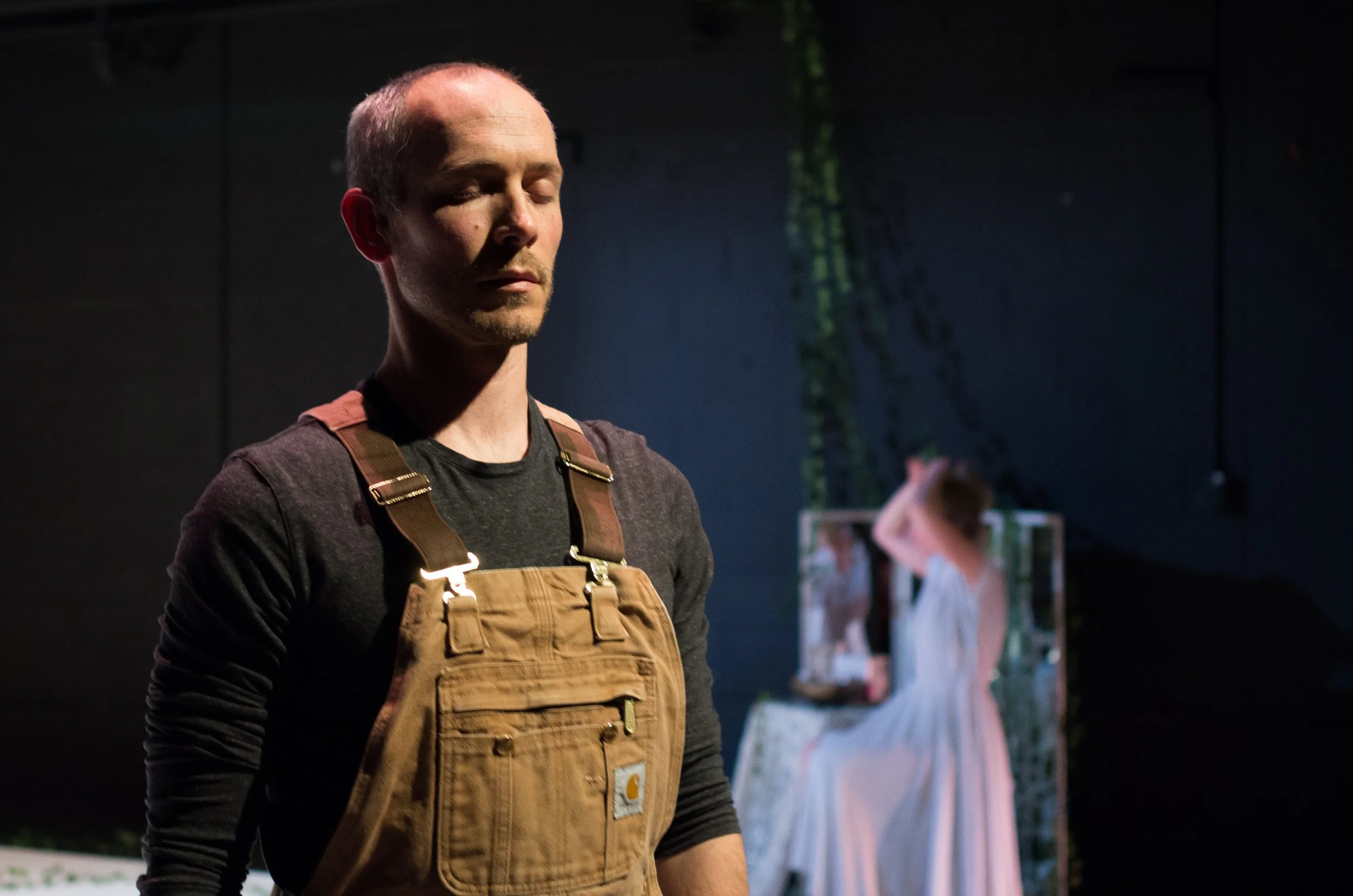
CREATION (re-creation)
January 23 - 24, 2014
Boulder, CO
Photography by RJ Hooker
The final opus in the Salon works series.
A delicate, spastic, surreal meditation on how our creations come alive.
A vision coaxed from the teeming void, an imperfect replica, an act of capitulation.
A dance-theatre performance in three acts.
CREATION (re-creation) emerges from the conflict of an artist ethos in crisis, grappling with fundamental questions about how we make things and what those things do once we make them. Craftsmanship collides with reproductive biologies, collaborative cultivation dissolves into solitary artist genius, originality crumbles under the pressure of ceaseless repetition. Binary thought dissolves into a shifting landscape of creative impulses, animal instincts, and architectural angles of approach.
Culminating Control Group’s ‘Salon’ work series, CREATION (re-creation) emerges from the circuitous journey of a four-year research process. An amalgamation of new and previously used materials, the event brings to life a collection of carefully crafted objects and actions and releases them to create their own momentary, surpassingly strange world.
Concept and creation by Control Group Productions
Performance by Todd Bilsborough, Patrick Mueller, & Taylor Semin
Sound Design by Todd Bilsborough
Physical & Digital Installation by the ensemble
Photo by RJ Hooker
Video by RJ Hooker
Concept Discussion
Romanticism prizes the artist above all: the individual alone, engaged in the expression of a deep, individual truth. It is in the Romantic era that we find the birth of the modern artist ethos, the Master Maker Model: the solitary artist genius manifesting exquisitely crafted, completely original expressions of self, beauty, and truth directly from imagination into the world. This vision of the artist feels decidedly stagnant – ignorant of context and limitations in its implication of total control by the artist, and arrogant in its formulations of mastery, ownership, and originality. Romanticism’s aggrandizement of the artist and of art’s purpose of personal expression leads to a lack of relationship with or respect for the work’s audience or for criticality in general.
The obvious juxtaposition to this perspective is the most primal force of human nature: reproduction (and its long-term effect: evolution). Procreation defies creative individuality, originality (genetic materials aim at replication), ownership, artistic vision, and control… Instead, this act of creation has much more to do with cultivation of the new ‘creation’ than with an inseminating artistic vision or intention. But this usually collaborative parental nurturing is only a part of the environmental influences that, working in tandem with the chaotically determined genetic composition, slowly contribute to the nature of the new creation. And ultimately, the urge to procreate doesn’t manifest as a desire to make a baby – that’s simply a (life-altering) by-product of the instinct-driven physical act. While collaboration, contextual responsiveness, and cultivation are excellent tactics in an artistic process, as a whole this vision of the artist, lacking coherence of intention and even a primarily aesthetic nature, doesn’t function.
Photography by RJ Hooker
This, then, is our artist ethos in crisis, a revolving binary of stale and ill-fitting models. CREATION seeks to re-balance this bipolarity – by repeatedly smashing the two sides together. Embedded within the binary of Master Maker and Nurturer we find a vast array of dualities that define the conflict of Romanticism and Reason: male/female, nature/technology, instinct/reason, product/process, object/context, essential/evolutional, mutable/eternal, personal/communal… underpinned by the question: how much control do we have? What are we trying to make, and what agency do we have to make it? What does our creation do once it is released into the world?


